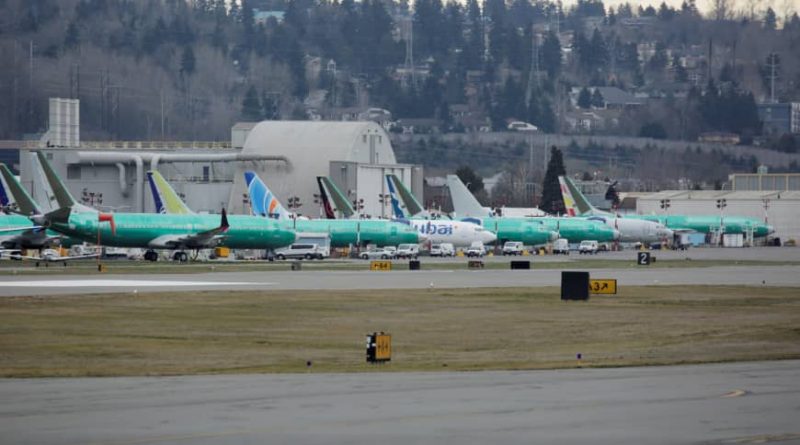Boeing Is a Slow Sinking Ship
Month after month and quarter after quarter, Boeing is sinking and management seems unable to close the holes. To realize the magnitude of the problem, one need only compare its current situation with that of December 2018: at that time the company was heading towards annual revenue of over $ 100 billion. Its stock was worth over $ 310 billion, its profits were over $ 10 billion, its cash flow was $ 15 billion, and its backlog was $ 490 billion.
In December 2018, the KC-46 refuelling aircraft program finally appeared to be moving towards the delivery phase to the USAF. Boeing had 5,700 * civilian aircraft on order, including 4,700 MAX, and delivered a total of 806 aircraft. Development of the Starliner and the B777X was going well and the company was a model of efficiency and profitability.
The Current Situation
Currently, Boeing stock is trading at $ 188, 2021 revenues are around $ 65 billion. Everything indicates that the giant will declare a profit in the order of $ 2-4 billion. However, I emphasize that the cash flow will be negative by at least $ 4 billion. In addition, a new phenomenon has appeared on its balance sheet and that is its debt; it now stands at over $ 62 billion.
Problems with the KC-46 continue to slow deliveries and cost overruns are on the rise. On the space side, the Starliner’s failures allowed Space X to overtake the giant with disconcerting ease. Development of the B777X has experienced some issues and is seriously behind schedule. The B787 has added to Boeing’s long list of problems as deliveries are suspended.
The total order book is now $ 367 billion and has 5,100 * civil aircraft, including 4,100 MAX. Total civilian aircraft deliveries are expected to be around 340 this year. The decrease in the MAX’s order book was offset by the 692 sales achieved this year. But some of those sales were made below cost, including Southwest.
Outdated Fighter Jet Programs
In 2021, Boeing dropped several significant orders on the military side. The F-18 Super Hornet lost in Canada and Finland are two of them. The two contracts represented more than 140 aircraft and could have breathed new life into the program. At the moment Boeing produces two Super Hornets per month and relied on these two orders to double production. Both of these failures dramatically reduce the likelihood that other countries will order F-18s.
For fighter jets, Boeing must now bet on the F-15EX in order to secure new orders. The USAF and the Israeli Air Force are about to place their order. But then again, the Super Strike Eagle is not young. Boeing now as to deal with the long-term effects of losing the Joint Strike Fighter (JSF) contract.
The Tanker
The KC-46’s problems are straining the patience of many senior USAF officers and members of Congress. For the next step in the replacement of refuelling planes, Boeing will have some competition: Lockheed Martin has teamed up with Airbus to present the LMXT which is nothing more than an A330MRTT assembled in the United States. It’s too early to know who wins, but the fact that there are two proposals do have an impact on the price. In the first contract, Boeing had significantly reduced its price in order to ensure that it won. The result is that Boeing is currently losing money on this contract and will not be able to make up for the next one.
There are still profitable and promising projects in the Defence division of Boeing, such as the Poseidon or the MQ-25. But at the moment none are large enough to compensate for the problems of the commercial aircraft division.
The MAX Disadvantage
The main business problem with the MAX family is that the top of the line does not meet the needs of the market. Airlines need a 200-passenger plane capable of transatlantic flights. Boeing has insisted on increasing the MAX’s capacity beyond 200 passengers, but not its range. The MAX9 and MAX10 are losing three out of four orders in their category. In fact, these two versions have little success outside of the United States.
Only the MAX8 offers clearly sufficient performance that can compete against the A320neo. In fact, the vast majority of MAX order are on this version. But Boeing is having great difficulty winning bulk orders. This explains why the MAX8 and MAX8-200 are more popular with LCCs. The MAX family has 1,500 fewer aircraft to deliver than the A320neo family. As of yet, there is no indication that the US giant will be able to narrow this gap.
The Years 2022 and 2023
Over the next two years, Boeing will accelerate the delivery of the already assembled MAX. This will lead to increased income and may give the illusion of a turnaround. But the reality is that a good chunk of those aircraft are sold at a loss. So it is important to look at the cash flow as well as the amount of debt. These are the two indicators that will really show where the giant is going.
As of yet, Boeing has still not reached the point of no return. But the ship continues to take on water and the situation continues to deteriorate. When will the alarm go off? And above all, when will the American government have to intervene?
* Boeing withdraws from its book, the orders of which the financial health of the customer is questionable. It is the only aircraft manufacturer to use this accounting rule. I chose not to take his orders out of the total in order to be fair since Airbus does not. Click here to subscribe for free at our YouTube channel
>>> Follow us on Facebook and Twitter

